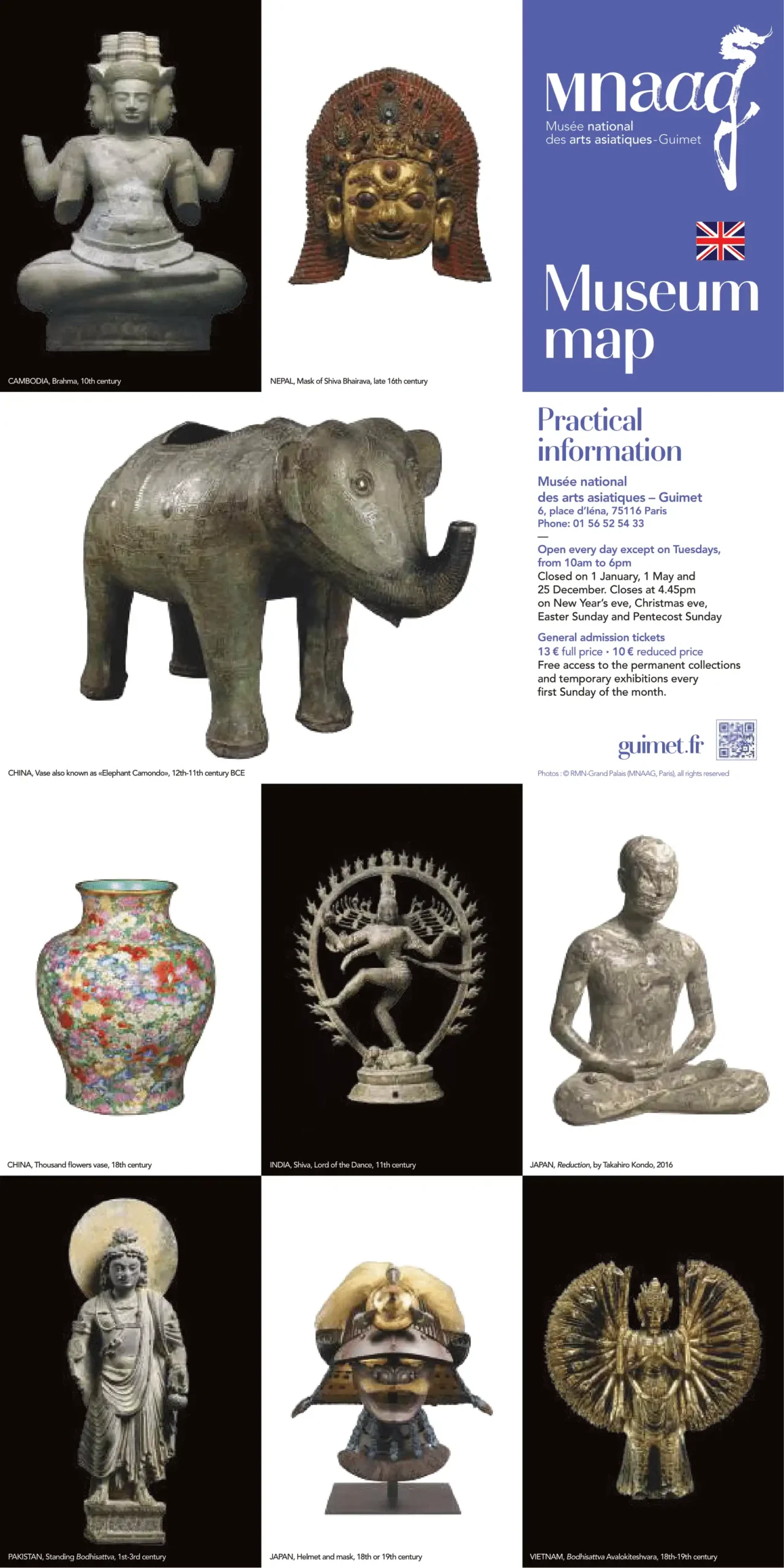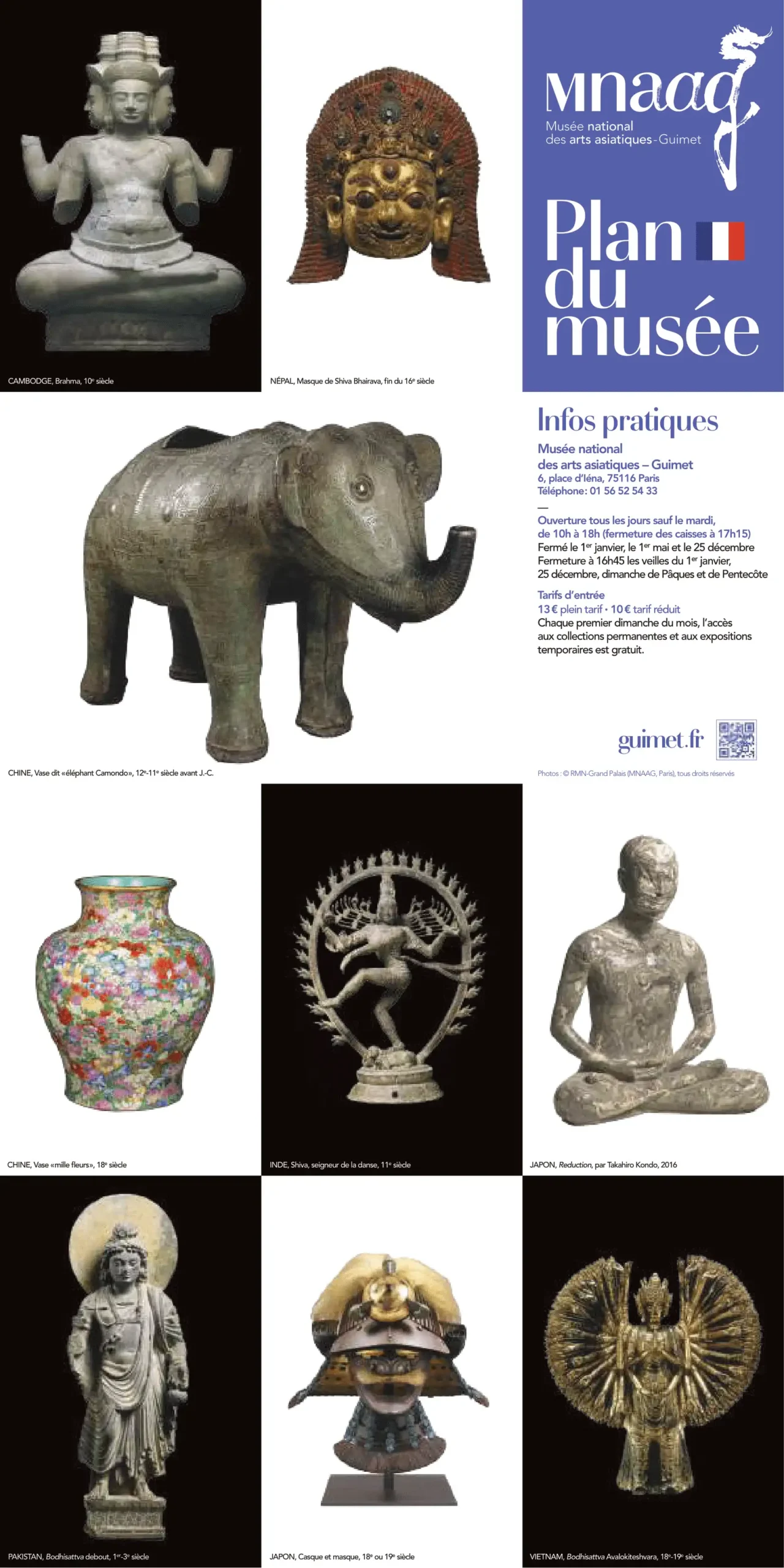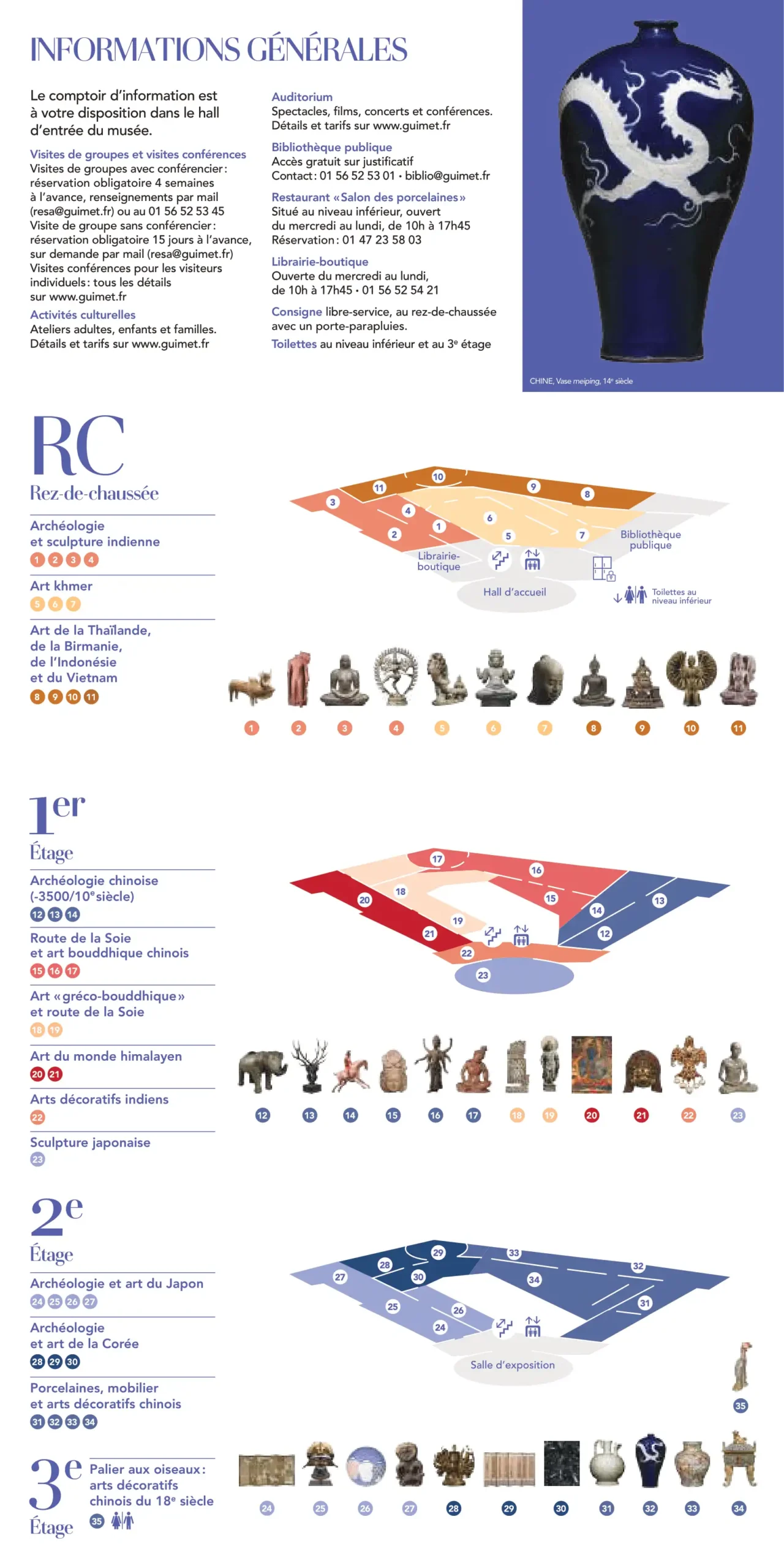Guimet Museum Map (2024)
The most up-to-date Guimet Museum Map makes it easy to plan your route through the galleries.
The Guimet Museum, located in Paris, specializes in Asian art and houses one of the largest collections of Asian artifacts outside Asia. It features works from China, Japan, India, Southeast Asia, and Central Asia, with collections spanning over 5,000 years of history.
Start with the Japanese Tea Room, then wind your way past Khmer sculptures and the Tibetan Buddhist altar. Don’t miss the rooftop terrace—it’s a quiet spot with a surprising Eiffel Tower view.
Whether you’re headed for the Afghan collections or the Chinese ceramics, this guide ensures you won’t miss a thing tucked into this treasure-filled museum.
Guimet Museum Map 2024
The official Guimet Museum map for 2024 details the layout of the Musée national des arts asiatiques – Guimet in Paris, highlighting key sections such as Indian archaeology and sculpture on the ground floor. The museum is organized by region and era, with galleries dedicated to the arts of Southeast Asia, Central Asia, China, Korea, India, Japan, Afghanistan/Pakistan, and the Himalayas.
Printable Guimet Museum Map PDF 2024
Guimet Museum French Map 2024
FAQ
How much time do you need at the Guimet Museum?
A meaningful visit to the Guimet Museum typically takes about 1.5 hours for the permanent collection, plus an additional 45 minutes for temporary exhibitions. Visitors interested in exploring every detail may spend several hours in the museum. The museum is vast, so time needed depends on your level of interest and pace.
How much is Guimet Museum tickets?
Guimet Museum tickets cost €13 for adults and €10 for the reduced rate. Admission is free for visitors under 18, EU residents aged 18–25, and everyone on the first Sunday of each month. The Paris Museum Pass also provides free entry to the museum.
What is the history of the Guimet Museum?
The Guimet Museum was founded by Émile Guimet, who began collecting Asian art in Lyon in 1879 and opened the museum in Paris in 1889. Over time, it became France’s national museum of Asian arts, expanding its collection through acquisitions, donations, and the transfer of Oriental art collections from the Louvre in 1945. Today, it houses one of the most comprehensive collections of Asian art outside Asia, spanning artifacts from Afghanistan to Japan and playing a central role in the study and exhibition of Asian civilizations.










